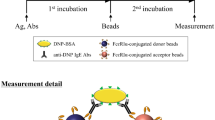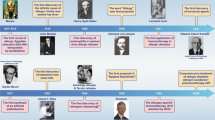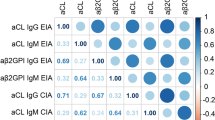Abstract
Approximately one-third of the world’s population suffers from allergies1. Exposure to allergens crosslinks immunoglobulin E (IgE) antibodies that are bound to mast cells and basophils, triggering the release of inflammatory mediators, including histamine2. Although IgE is absolutely required for allergies, it is not understood why total and allergen-specific IgE concentrations do not reproducibly correlate with allergic disease3,4,5. It is well-established that glycosylation of IgG dictates its effector function and has disease-specific patterns. However, whether IgE glycans differ in disease states or affect biological activity is completely unknown6. Here we perform an unbiased examination of glycosylation patterns of total IgE from individuals with a peanut allergy and from non-atopic individuals without allergies. Our analysis reveals an increase in sialic acid content on total IgE from individuals with a peanut allergy compared with non-atopic individuals. Removal of sialic acid from IgE attenuates effector-cell degranulation and anaphylaxis in several functional models of allergic disease. Therapeutic interventions—including removing sialic acid from cell-bound IgE with a neuraminidase enzyme targeted towards the IgE receptor FcεRI, and administering asialylated IgE—markedly reduce anaphylaxis. Together, these results establish IgE glycosylation, and specifically sialylation, as an important regulator of allergic disease.
This is a preview of subscription content, access via your institution
Access options
Access Nature and 54 other Nature Portfolio journals
Get Nature+, our best-value online-access subscription
$32.99 / 30 days
cancel any time
Subscribe to this journal
Receive 51 print issues and online access
$199.00 per year
only $3.90 per issue
Buy this article
- Purchase on SpringerLink
- Instant access to full article PDF
Prices may be subject to local taxes which are calculated during checkout



Similar content being viewed by others
Data availability
Source Data are provided for Figs. 1–3 and Extended Data Figs. 1, 4–7. Full scans of all uncropped protein gel stains, lectin blots and western blots with size marker indications presented here can be found in the Supplementary Information. All other data supporting the findings of this study are available from the corresponding author upon request.
References
Gupta, R. S. et al. Prevalence and severity of food allergies among US adults. JAMA Netw. Open 2, e185630 (2019).
Gould, H. J. & Sutton, B. J. IgE in allergy and asthma today. Nat. Rev. Immunol. 8, 205–217 (2008).
Bird, J. A., Crain, M. & Varshney, P. Food allergen panel testing often results in misdiagnosis of food allergy. J. Pediatr. 166, 97–100 (2015).
Du Toit, G. et al. Randomized trial of peanut consumption in infants at risk for peanut allergy. N. Engl. J. Med. 372, 803–813 (2015).
Peters, R. L., Gurrin, L. C. & Allen, K. J. The predictive value of skin prick testing for challenge-proven food allergy: a systematic review. Pediatr. Allergy Immunol. 23, 347–352 (2012).
Arnold, J. N., Wormald, M. R., Sim, R. B., Rudd, P. M. & Dwek, R. A. The impact of glycosylation on the biological function and structure of human immunoglobulins. Annu. Rev. Immunol. 25, 21–50 (2007).
Bégin, P. et al. Phase 1 results of safety and tolerability in a rush oral immunotherapy protocol to multiple foods using omalizumab. Allergy Asthma Clin. Immunol. 10, 7 (2014).
Patil, S. U. et al. Peanut oral immunotherapy transiently expands circulating Ara h 2-specific B cells with a homologous repertoire in unrelated subjects. J. Allergy Clin. Immunol. 136, 125–134 (2015).
Wang, T. T. et al. IgG antibodies to dengue enhanced for FcγRIIIA binding determine disease severity. Science 355, 395–398 (2017).
Lu, L. L. et al. A functional role for antibodies in tuberculosis. Cell 167, 433–443 (2016).
Wang, T. T. et al. Anti-HA glycoforms drive B cell affinity selection and determine influenza vaccine efficacy. Cell 162, 160–169 (2015).
Parekh, R. B. et al. Association of rheumatoid arthritis and primary osteoarthritis with changes in the glycosylation pattern of total serum IgG. Nature 316, 452–457 (1985).
Espy, C. et al. Sialylation levels of anti-proteinase 3 antibodies are associated with the activity of granulomatosis with polyangiitis (Wegener’s). Arthritis Rheum. 63, 2105–2115 (2011).
Wang, T. T. & Ravetch, J. V. Functional diversification of IgGs through Fc glycosylation. J. Clin. Invest. 129, 3492–3498 (2019).
Arnold, J. N. et al. The glycosylation of human serum IgD and IgE and the accessibility of identified oligomannose structures for interaction with mannan-binding lectin. J. Immunol. 173, 6831–6840 (2004).
Plomp, R. et al. Site-specific N-glycosylation analysis of human immunoglobulin E. J. Proteome Res. 13, 536–546 (2014).
Shade, K. T. et al. A single glycan on IgE is indispensable for initiation of anaphylaxis. J. Exp. Med. 212, 457–467 (2015).
Wu, G. et al. Glycoproteomic studies of IgE from a novel hyper IgE syndrome linked to PGM3 mutation. Glycoconj. J. 33, 447–456 (2016).
Yamazaki, T. et al. Receptor-destroying enzyme (RDE) from Vibrio cholerae modulates IgE activity and reduces the initiation of anaphylaxis. J. Biol. Chem. 294, 6659–6669 (2019).
Jabs, F. et al. Trapping IgE in a closed conformation by mimicking CD23 binding prevents and disrupts FcεRI interaction. Nat. Commun. 9, 7 (2018).
Wuhrer, M. et al. Glycosylation profiling of immunoglobulin G (IgG) subclasses from human serum. Proteomics 7, 4070–4081 (2007).
Nimmerjahn, F. & Ravetch, J. V. Anti-inflammatory actions of intravenous immunoglobulin. Annu. Rev. Immunol. 26, 513–533 (2008).
Ding, J. X. et al. Aberrant sialylation of serum IgA1 was associated with prognosis of patients with IgA nephropathy. Clin. Immunol. 125, 268–274 (2007).
Maurer, M. A. et al. Glycosylation of human IgA directly inhibits influenza A and other sialic-acid-binding viruses. Cell Rep. 23, 90–99 (2018).
Colucci, M. et al. Sialylation of N-linked glycans influences the immunomodulatory effects of IgM on T cells. J. Immunol. 194, 151–157 (2015).
Collins, B. E., Smith, B. A., Bengtson, P. & Paulson, J. C. Ablation of CD22 in ligand-deficient mice restores B cell receptor signaling. Nat. Immunol. 7, 199–206 (2006).
Abe, K., Yamamoto, K. & Sinohara, H. Clearance of desialylated mouse alpha-macroglobulin and murinoglobulin in the mouse. J. Biochem. 108, 726–729 (1990).
Fleischer, D. M. et al. Oral food challenges in children with a diagnosis of food allergy. J. Pediatr. 158, 578–583 (2011).
Sampath, V. et al. Deciphering the black box of food allergy mechanisms. Ann. Allergy Asthma Immunol. 118, 21–27 (2017).
Christensen, S. & Egebjerg, J. Cloning, expression and characterization of a sialidase gene from Arthrobacter ureafaciens. Biotechnol. Appl. Biochem. 41, 225–231 (2005).
Dombrowicz, D. et al. Anaphylaxis mediated through a humanized high affinity IgE receptor. J. Immunol. 157, 1645–1651 (1996).
Dombrowicz, D., Flamand, V., Brigman, K. K., Koller, B. H. & Kinet, J. P. Abolition of anaphylaxis by targeted disruption of the high affinity immunoglobulin E receptor alpha chain gene. Cell 75, 969–976 (1993).
MacGlashan, D. Jr, Lavens-Phillips, S. & Katsushi, M. IgE-mediated desensitization in human basophils and mast cells. Front. Biosci. 3, d746–d756 (1998).
Kirshenbaum, A. S. et al. Characterization of novel stem cell factor responsive human mast cell lines LAD 1 and 2 established from a patient with mast cell sarcoma/leukemia; activation following aggregation of FcεRI or FcγRI. Leuk. Res. 27, 677–682 (2003).
Bandara, G., Metcalfe, D. D. & Kirshenbaum, A. S. Growth of human mast cells from bone marrow and peripheral blood-derived CD34+ pluripotent hematopoietic cells. Methods Mol. Biol. 1220, 155–162 (2015).
Anthony, R. M. et al. Recapitulation of IVIG anti-inflammatory activity with a recombinant IgG Fc. Science 320, 373–376 (2008).
Acknowledgements
We thank K. Jeffrey, F. Wermeling and A. Luster for constructive comments; T. Stanley and D. Hayden (Harvard Catalyst) for guidance in biostatistical analysis; N. Smith for technical assistance; and the patients participating in our studies. This work was supported by grants from the NIH (DP2AR068272 and R01AI139669) and FARE to R.M.A.; NIH T32 and K12 fellowships (T32AR007258 and K12HL141953) to K.C.S.; an NIH NIAID K23 grant (K23AI121491) to S.U.P.; an NIH NIAID U19 grant (5U19 AI095261-03) to W.G.S.; and a Sanofi iAward to M.E.C.
Author information
Authors and Affiliations
Contributions
K.C.S. conducted mouse experiments, performed functional assays, developed methods, and generated resources, along with D.J.H.; M.K. cloned, generated and characterized NEUFcε; M.E.C. purified samples and analysed data, along with E.L.; N.W. performed mass spectrometry on purified samples; S.U.P. and W.G.S. acquired patient sample resources; S.U.P. and W.G.S. provided collected clinical samples; and R.M.A. conceived and supervised the study, and wrote the manuscript along with K.C.S., M.E.C., S.U.P. and W.G.S.
Corresponding author
Ethics declarations
Competing interests
The authors declare no competing interests.
Additional information
Peer review information Nature thanks Steve Galli, Kari Nadeau and Jim Paulson for their contribution to the peer review of this work.
Publisher’s note Springer Nature remains neutral with regard to jurisdictional claims in published maps and institutional affiliations.
Extended data figures and tables
Extended Data Fig. 1 Characterization of non-atopic and allergic human IgE.
a, Allergen-specific IgE levels for Ara h 2 (peanut; non-atopic, n = 11; allergic, n = 30), Der p 1 (dust mite; n = 5, 3), Fel d 1 (cat; n = 5, 3) and Bet v 1 (birch pollen; n = 4, 3). b, Strategy for enriching IgE from human sera. c, Quantified degranulation of human LAD2 mast cells sensitized with PBS, non-atopic IgE or allergic IgE and stimulated with anti (α)-human IgE (PBS, n = 1; non-atopic, n = 4; allergic, n = 4). d, Quantified MFI (left) and representative histograms (right) of anti-hIgE FACS staining on human LAD2 mast cells sensitized with PBS, non-atopic hIgE or allergic hIgE (PBS, n = 3; non-atopic, n = 4; allergic, n = 3). APC, allophycocyanin. e, Anti-hIgE from c, d binds similarly to SiahIgE and AshIgE, as determined by hIgE ELISA assays. n = 2 technical replicates per group, representative of three experiments. f, g, IgE glycan distribution by sex (f; n = 9 males; n = 12 females) and age (g; 0–9 years, n = 2; 10–19, n = 2; 20–29, n = 6; 30–39, n = 7; 40–49, n = 1; 50–59, n = 2; 60–69, n = 1). h, Representative structures of complex N-linked glycans from Fig. 1j. Data shown are means ± s.e.m. (a, c, d, f, g). P-values were determined by two-tailed unpaired t-test (d, f) or two-way ANOVA with Sidak’s multiple comparison test (a, c, g). n represents biologically independent serum samples (a, c, d, f, g).
Extended Data Fig. 2 N-linked glycans observed on native human IgE.
a, Representative MS/MS spectrum for N265-linked A2F glycopeptide, showing the B ions (non-reducing end fragments) and Y ions (reducing end fragments containing the intact peptide) resulting from glycosidic-bond cleavage, and the b ions containing the peptide N terminus resulting from peptide-bond cleavage. The Y1 ion used for quantification of glycopeptides is circled (n = 18 biologically independent samples). b, Extracted ion chromatograms for IgE N265-linked sialylation variants from a patient with an allergy and a non-atopic donor. c, Extracted ion chromatograms for IgE N168-linked sialylation variants from a patient with an allergy and a non-atopic donor. AV, average (referring to the number of spectra averaged); BP, base peak; MA, manual integration; RT, retention time.
Extended Data Fig. 3 N-linked glycans observed on IgE myeloma standard.
a, b, Extracted ion chromatograms for site-specific N-linked glycosylation from chymotryptic (a) or tryptic (b) digest of the IgE myeloma sample used as a standard.
Extended Data Fig. 4 Site-specific characterization of resolved IgE glycans from non-atopic individuals and individuals with allergies.
a, Occupancy of N-linked glycosylation sites: N140 (non-atopic, n = 15; allergic, n = 13), N168 (n = 16, 14), N218 (n = 15, 15), N265 (n = 12, 15), N371 (n = 15, 15), N383 (n = 16, 15) and N394 (n = 13, 16). b, Percentage of oligomannose moieties at N394 (n = 23, 18). c, Number of fucose residues: N140 (n = 15, 13), N168 (n = 15, 17), N218 (n = 15, 19), N265 (n = 12, 18) and N371 (n = 15, 17). d, Number of biGlcNAc residues: N140 (n = 15, 13), N168 (n = 16, 17), N218 (n = 15, 19), N265 (n = 16, 20) and N371 (n = 16, 17). e, Number of galactose residues: N140 (n = 15, 14), N168 (n = 15, 17), N218 (n = 15, 19), N265 (n = 12, 19) and N371 (n = 15, 17). f, Number of sialic acid residues: N140 (n = 14, 13), N168 (n = 15, 13), N218 (n = 15, 17), N265 (n = 12, 19) and N371 (n = 15, 17). Data plotted are means ± s.e.m. P values were determined by two-way ANOVA with Sidak’s multiple comparison test. n represents biologically independent serum samples (a–f).
Extended Data Fig. 5 Removal of sialic acid from IgE.
a, Protein gel stain and lectin blots of IVIG, native human IgE purified from patients with allergies, and fetuin. MALI, Maackia amurensis lectin I. b, HPLC glycan traces of undigested (Utx) allergic hIgE and fetuin; of allergic hIgE and fetuin digested with sialidase from A. ureafaciens to release α2,3-, α2,6-, α2,8- and α2,9-linked sialic acids (α2-3, 6, 8, 9 NEU-tx); and allergic hIgE and fetuin digested with sialidase from Streptococcus pneumoniae to release α2,3-linked sialic acids (α2-3 NEU-tx). c, HPLC glycan traces of undigested or recombinant OVA-specific mIgE digested with sialidase from A. ureafaciens. d, Left, quantification of vascular leakage by Evan’s blue dye (n = 6 mouse ears per group) after PCA in mice sensitized with PBS or with SiamIgE or AsmIgE specific for DNP; right, representative ear images. e, Gating strategy for IgE loading on mouse skin ear mast cells. Shown are representative FACS plots used to identify mast cells in mouse ears and to determine IgE levels on mouse ear mast cells. SSC, side scatter. f, Binding of OVA-specific SiamIgE and AsmIgE to OVA, as determined by ELISA. n = 2 technical replicates per group, representative of three biologically independent experiments. g, h, OVA-elicited systemic anaphylaxis as measured by temperature drop in mice sensitized with PBS, OVA-specific SiamIgE (g, n = 4; h, n = 6) or OVA-specific AsmIgE (g, n = 5; h, n = 6) by intravenous (g) or intraperitoneal (h) injection. i, Serum levels of DNP-specific SiamIgE (n = 4) and AsmIgE (n = 3) in mice at defined times after systemic administration, determined by ELISA. Data are means ± s.e.m. and are representative of three experiments. P values determined by two-tailed paired t-test (d) or two-way ANOVA with Tukey’s multiple comparison test (g, h).
Extended Data Fig. 6 FACS analysis of loading of human mast cells with SiahIgE or AshIgE, phenotypic staining of PBMC-derived mast cells, and activation in primary basophils.
a, MFI (left) and representative histogram (right) of surface-bound hIgE on LAD2 mast cells following sensitization with PBS, OVA-specific SiahIgE or OVA-specific AshIgE (n = 3 technical replicates per group). Data are means ± s.e.m. and are representative of three independent experiments; one-way ANOVA with Tukey’s multiple comparison test. b, Representative phenotypic staining by FACS of primary human mast cells from peripheral blood derived CD34+ pluripotent haematopoietic cells (n = 2 technical replicates per group). c, Gating strategy for basophil activation assay, showing representative FACS plots used to determine basophil activation from PBMCs.
Extended Data Fig. 7 PSA for IgE isotype controls and characterization of NEUFcε.
a, Temperature change following OVA-induced PSA in mice receiving DNP-specific SiamIgE on day 0, and then PBS, OVA-specific SiamIgE or OVA-specific AsmIgE isotype controls (from Fig. 3e) on day 1. n = 4 mice for all groups; two-way ANOVA with Tukey’s multiple comparison test. b, Protein gel stain (left) and immunoblot (IB) for mIgE (right) of native and denatured NEUFcε. c, Binding kinetics of analyte NEUFcε to ligand hFcεRIα on biosensor. Kinetics of analytes of threefold serial dilution from 26.2 nM to 0.32 nM were analysed. d, FACS analysis of surface-bound NEUFcε on LAD2 mast cells following 30 min of sensitization at 37 °C. n = 3 technical replicates per group, representative of two independent experiments. e–h, Neuraminidase activity of NEUFcε determined by digestion of mIgE or fetuin overnight (e–g), and detection of protein loading by Coomassie blue (e), terminal α2,6-sialic acid by SNA (f), and terminal galactose by Erythrina cristagalli lectin (ECL) (g) or by the amount of substrate 2-O-(p-nitrophenyl)-α-d-N-acetylneuraminic acid digested by NEUFcε in a colorimetric assay (h; n = 3 technical replicates per group, representative of two independent experiments). Data are means ± s.e.m.
Supplementary information
Supplementary Figure 1
Full scans of uncropped protein gel stains, lectin, or western blots with size marker indications presented in this manuscript.
Rights and permissions
About this article
Cite this article
Shade, KT.C., Conroy, M.E., Washburn, N. et al. Sialylation of immunoglobulin E is a determinant of allergic pathogenicity. Nature 582, 265–270 (2020). https://doi.org/10.1038/s41586-020-2311-z
Received:
Accepted:
Published:
Issue date:
DOI: https://doi.org/10.1038/s41586-020-2311-z
This article is cited by
-
Glycosylation as an intricate post-translational modification process takes part in glycoproteins related immunity
Cell Communication and Signaling (2025)
-
Elevated level of multibranched complex glycan reveals an allergic tolerance status
Clinical Proteomics (2024)
-
Impact of temperature and relative humidity variability on children’s allergic diseases and critical time window identification
BMC Public Health (2024)
-
Mechanism of glycoform specificity and in vivo protection by an anti-afucosylated IgG nanobody
Nature Communications (2023)
-
Impact of ultra-low temperature storage on serum sIgE detection and allergic disease biobank feasibility
Scientific Reports (2023)



